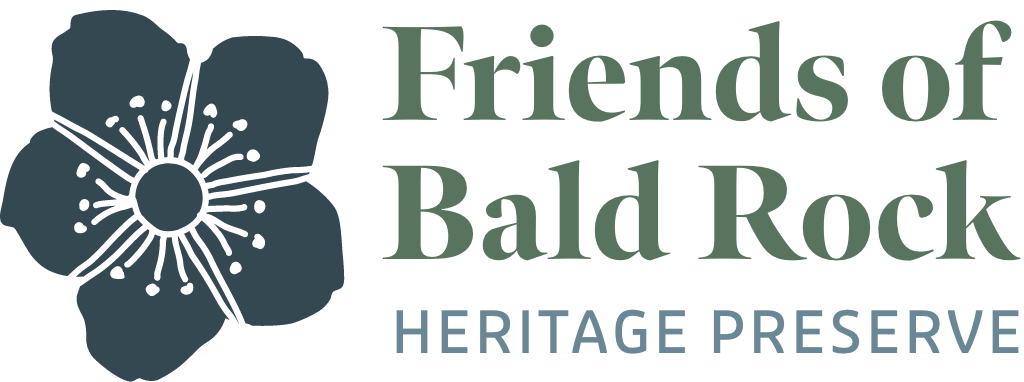In October 2021, 17 volunteers worked 31.5 man-hours and picked up 500 pounds of trash. Over the next two days, 15 volunteers, aged 18-88, worked 42 man-hours pressure washing graffiti off the rock.
All restoration cleaning was done in coordination with the SC Department of Natural Resources. SCDNR staff worked with FOBRHP volunteers during these two and a half days. The Preserve was closed to the public. The SCDNR Law Enforcement officer was onsite at times on two days. SCDNR Media staff photographed and videoed the volunteers’ work. They filmed “Before” and “After” drone videos to document our progress. John Jordan, FOBRHP Vice President, served as “Rock Boss” for this event.
Volunteers received two detailed emails with information about work day procedures in advance and one reminder just prior to the event, including Covid-19 precautions and Safety Protocols. Onsite, volunteers read and signed Volunteer Liability Waivers before beginning work.
DAY 1
Wednesday, 13 October at 1p, 17 amazing volunteers worked over two hours (Total of 31.5 man-hours) to remove 25 large bags/500 pounds of litter from the Preserve, in preparation for pressure washing the following two days. Included in the litter were food wrappers, syringes, dirty diapers, clothing, broken glass, plastic bottles, cardboard boxes, drink cups, cigarette butts, and other garbage. All trash was taken to the nearby recycling center. Picking up litter prepared the rock for pressure washing over the next two days.
Fox Carolina news channel sent a reporter and camera to cover the event. Austen Attaway, Region 1 Biologist, SCDNR, gave an interview for the evening news.
Litter pickup was supported by Greenville County “Litter Ends Here” Coordinator, Summer Gagnon, who supplied pickup sticks, trash bags, water, first aid kit, bug spray, plus lots of energy and enthusiasm for the project. Our 17 volunteers were residents of the Caesars Head, Bald Rock, and Lakemont communities; members of Upstate Master Naturalist Association and the current class; Facebook contacts, and friends.
DAY 2
Thursday, 14 October, the River Falls Fire Department brought their pumper truck with 2200 gallons of water. volunteers met them to adjust and set the correct pressure for our water hoses and pressure washers. Eight pressure washing volunteers worked in shifts running four pressure washers continuously for 5 hours (20 man-hours).
WYFF sent a helicopter to video the work on the rock and sent a reporter and cameraman to interview Susan Jordan and Austen Attaway. The report aired on the evening news.
River Falls Fire Department volunteers were extremely helpful and supportive! We could not have pressure washed without them. Volunteers and neighbors brought hundreds of feet of garden hose to connect to the fire truck hose and splitter, enabling pressure washers to reach large areas of the rock. Lunch, snacks and water were provided to volunteers, SCDNR staff, and firemen by Janet Masters and her neighbors from nearby Bald Rock community.
DAY 3
Friday, 15 October, we started pressure washing again. Brad McCarson, Asst. Fire Chief, River Falls Fire Department provided great support. Seven pressure washing volunteers worked in shifts to remove graffiti for 5.5hours (22 man-hours). Pressure washing volunteers ranged in age from 18-88! Lunch, snacks and water were provided by Lisa Hunter from Lakemont Colony to all volunteers, SCDNR staff and firemen.
Susan Jordan, President, Friends of Bald Rock Heritage Preserve, and Greg Lucas, SCDNR Communications, were interviewed by phone by Mark Price, Reporter for the Charlotte Observer/State online newspaper.
We plan to repeat pressure washing and litter pick up on a regular basis for the foreseeable future while we work on building public support for a full restoration that will address issues to enhance the public’s experience of the Preserve while protecting its natural resources.
NOTES
We learned that it is advisable to only fill the gas tanks half full to keep the pressure washers running on uneven terrain. On an incline it is easy for the pressure washers to flood or flip over.
Any area of graffiti often has multiple layers of paint. More paint is under the top layer of rock patina. It is safe to assume the entire rock surface is covered in paint.
One of the biggest hazards to volunteers was broken glass littering the rock. Even though we picked up glass by hand and used a blower to remove it on Wednesday, there was still plenty remaining. This presented a clear risk to volunteers as the glass became airborne when the pressure washer water hit it. We recommend that glass containers be prohibited in the future.
We noted that in areas where campfires had been burned, the rock was fractured.



